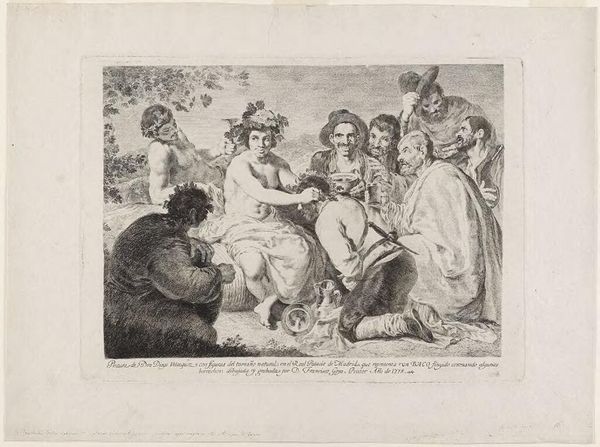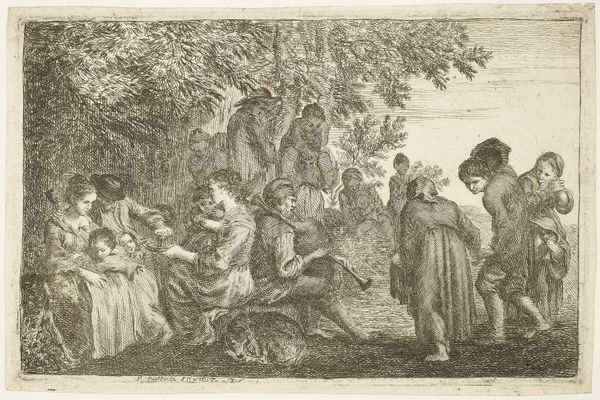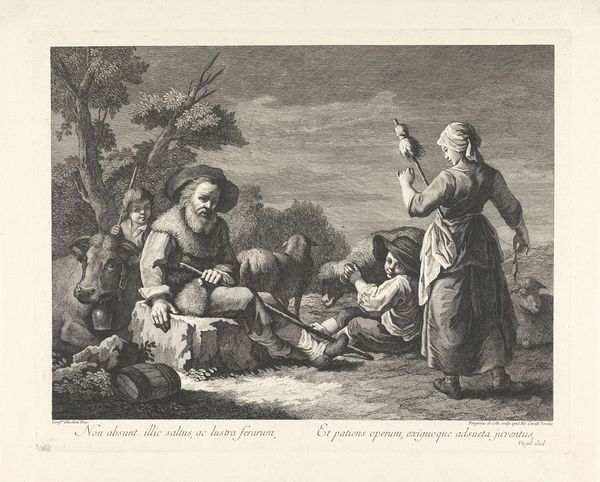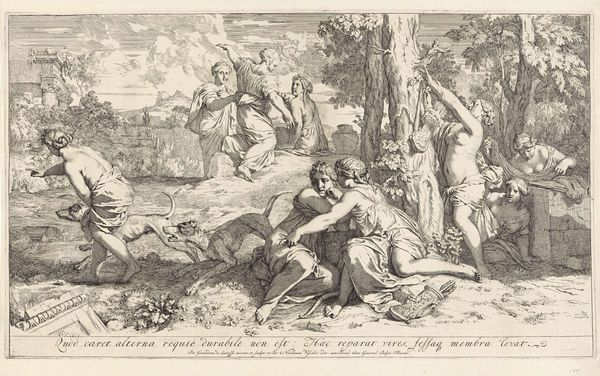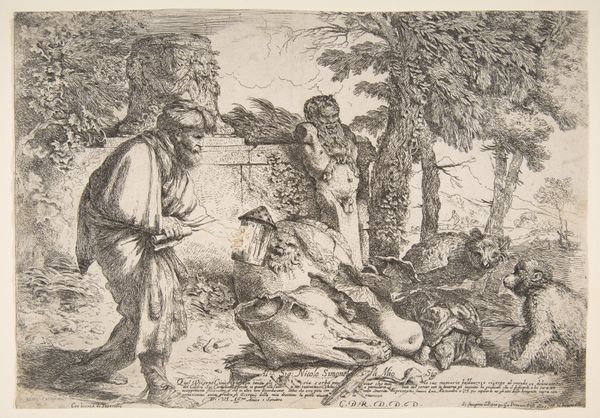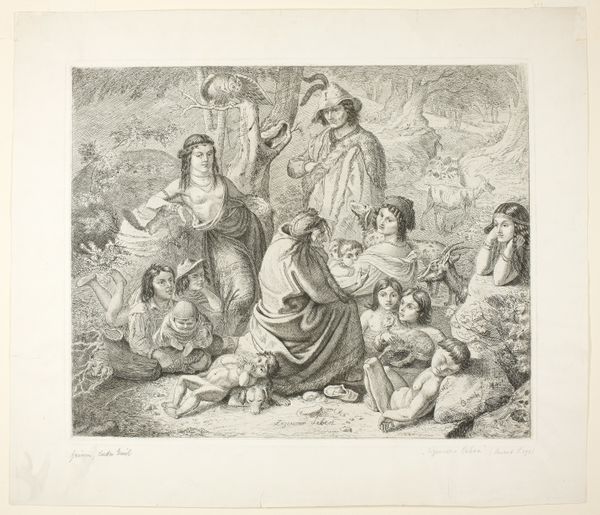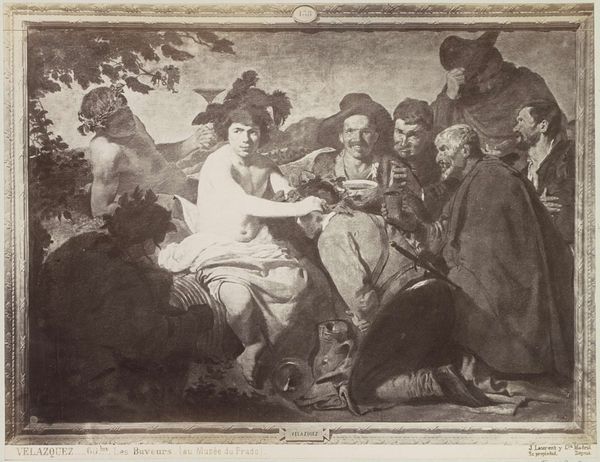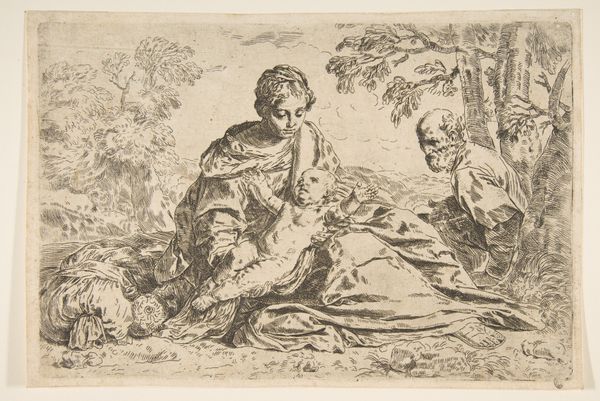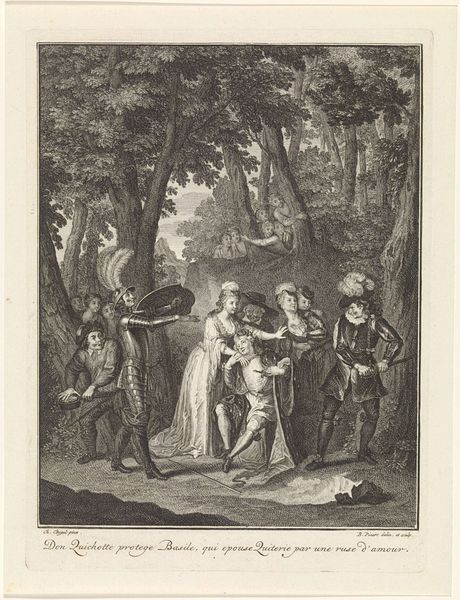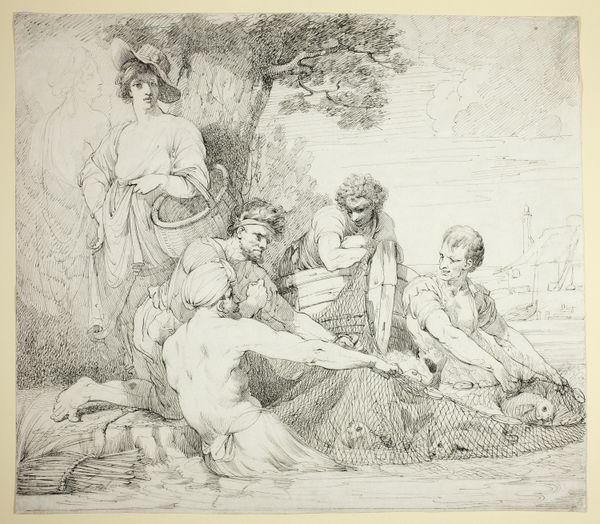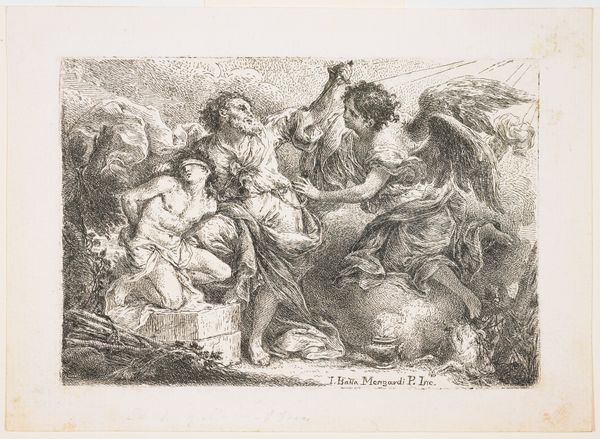
Dimensions: 286 × 395 mm (image); 319 × 436 mm (plate); 347 × 453 mm (sheet)
Copyright: Public Domain
Francisco de Goya created "The Drunkards" using etching and aquatint, after Diego Velázquez, in 1778. It portrays a scene of revelry, inspired by the Roman god Bacchus, but also evokes a sense of discomfort through its stark depiction of inebriation. In eighteenth-century Spain, Goya navigated a society marked by rigid class structures and religious conservatism. The print subtly challenges norms through its representation of men from various social classes engaged in uninhibited behavior, blurring the lines of decorum. The print is not just a depiction of drunken revelry; it's a glimpse into the complex interplay between social classes and personal freedoms during Goya's time. The emotional impact lies in its raw honesty, inviting us to confront uncomfortable aspects of human nature and societal hierarchies, prompting introspection. It serves as a reminder of the enduring relevance of art in shaping discussions about identity, social dynamics, and cultural values.
Comments
No comments
Be the first to comment and join the conversation on the ultimate creative platform.
